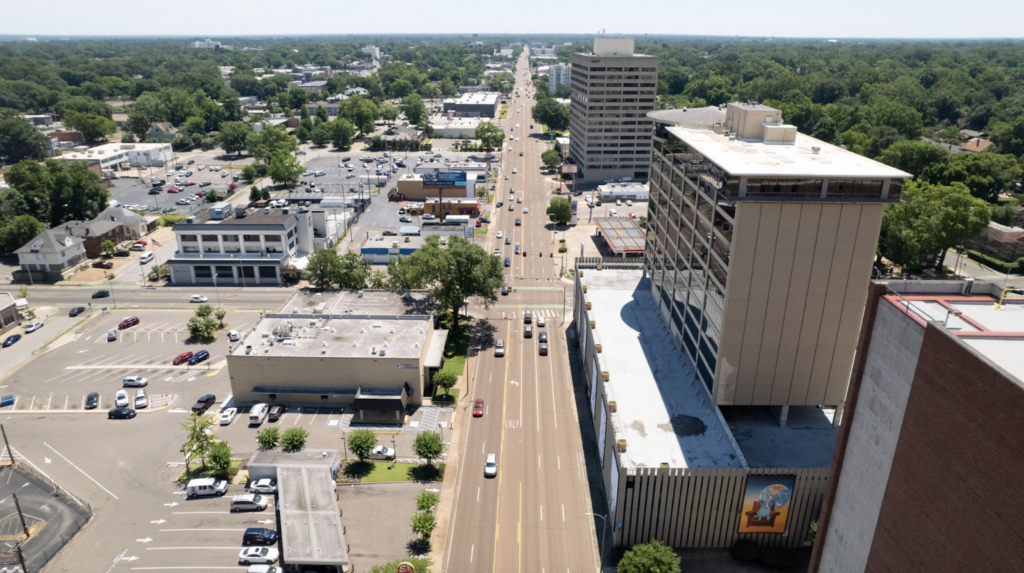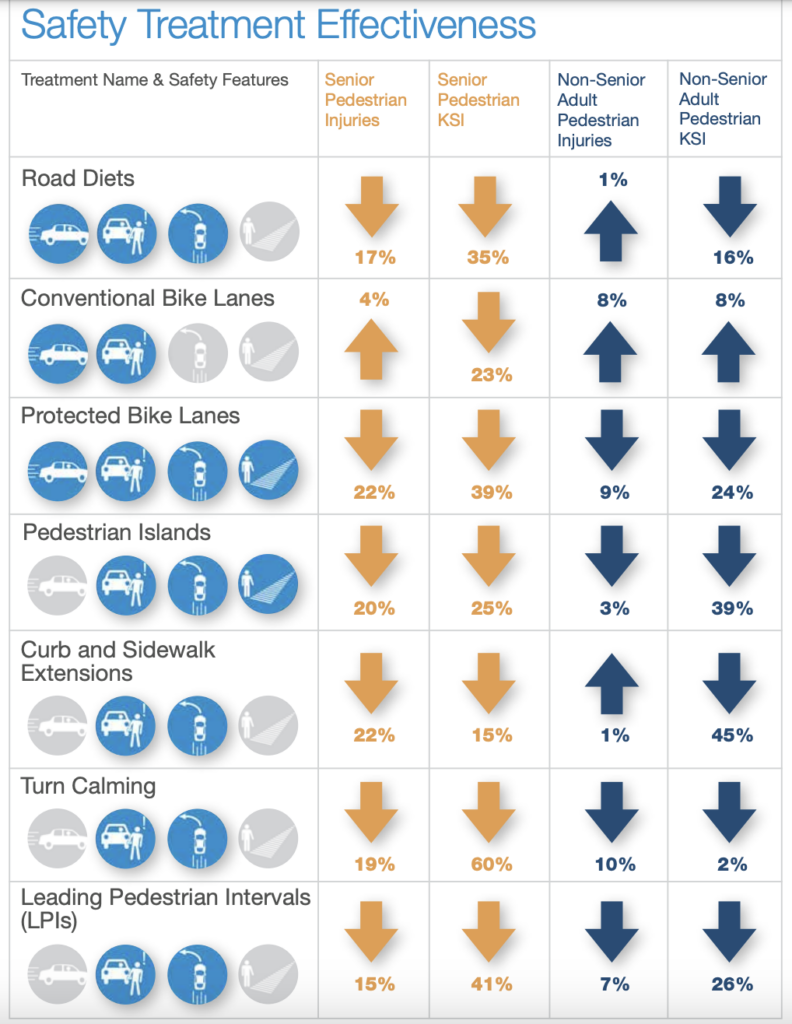Eliminating driver error doesn’t work. What does? Part III: The Seven E’s
Cities across the world are arriving at the same conclusion: the only acceptable number of pedestrian crash-related deaths is zero. How can state departments of transportation be part of the solution? In this third part of our blog series, we explore the seven E’s state DOTs should consider when making pedestrian safety infrastructure improvements.

Changing roadway safety in design will take a change of culture in how Americans view pedestrians from behind the wheel. An essential part of this change in culture will come from how practitioners design our nation’s roadways. Who are we truly designing our roads for? For vehicles or for people?
This post is part III of a blog series, Eliminating driver error doesn’t work. What does? See parts I and II.
The Seven E’s
A comprehensive strategy is necessary to change our approach to road design. To guide state DOT safety efforts, some transportation professionals have suggested seven guidelines, or seven E’s. In part I of this blog series, our post covered the downfalls and areas of improvement for two of those E’s—education and enforcement. While education and enforcement have their place in roadway safety, they cannot be the top priority in a DOT’s approach. The remaining five E’s, evaluation, engagement, engineering, encouragement, and equity, are vital to our roadway’s safety-centric transformation.
Proper evaluation of America’s roadways is required to create a foundation for change. Currently, there are no national standards for data collection and reporting of pedestrian crash-related deaths that are comprehensive and set tolerable safety goals. Without proper data collection standards, state DOTs are not able to fully comprehend the severity of the issue, or have insight into where the most dangerous roads are located.
Community engagement has the potential to create inclusive, equitable grassroots movements that are fundamental in igniting the reform of state DOTs to create safer roads for all users, including pedestrians. When state DOTs engage with the local communities identified in their evaluation efforts, a more inclusive design process can evolve to meet the needs of those specific communities, in addition to their safety.
An example of effective community-generated programming is the 11th Street Bridge Park project. Throughout that project, which will build a pedestrian bridge over the Anacostia River, community engagement has been the central focus of the District’s DOT (DDOT). DDOT brought community members in from the very beginning and factored their feedback into the design process. The resulting community-generated programming of the pedestrian bridge includes outdoor performance spaces, playgrounds, urban agriculture, an Environmental Education Center with classrooms to teach students about river systems, public art that tells the rich history of the region, and kayak and canoe launches.
The engineering of roads and streets directly impacts pedestrian safety and crash-related deaths. While there are myriad factors involved in these pedestrian crash deaths, our streets are designed to move many cars quickly at the expense of the safety of everyone who uses them. Roadway design strongly impacts how people drive, and it’s often more influential on driver behavior than the posted speed limit.
Smart Growth America’s Dangerous by Design report clearly outlines the American epidemic of deaths while walking and its direct relationship to the design of our roads.

Some DOTs, like NYCDOT, have been spurred on by the Vision Zero movement (read more about that movement in this prior blog post) and started implementing design-centered solutions to traffic deaths. NYCDOT’s recent report includes evaluations of specific design interventions and their impact on pedestrian safety. The image on the left recommends design schemes engineered to improve pedestrian safety and reduce crash-related deaths.
Road designs that are engineered with safety as their priority complemented by transparent data reporting on their related reduced crash deaths are likely to encourage adoption across cities and states. Additionally, federal and state governments could financially incentivize the adoption of such road designs to further encourage safety improvements.
Last and most definitely not least is the common thread that connects all of these themes together: equity. Everyone, no matter where they live, their income level, or the color of their skin should be safe while walking. When our streets are dangerous, the heaviest burden falls on communities of color. SGA’s Dangerous by Design report found that Black Americans and Indigenous Americans are particularly affected by unsafe roads for pedestrians, indicative of the road safety inequities these populations experience in their communities. To address these equity concerns, DOTs should prioritize change in communities that are most at risk.
What’s next?
State DOTs need to reprioritize how they think about public safety and the purpose of road design. Moving vehicles quickly at the expense of human life is not acceptable. The seven E’s can be repeated and contextualized across state DOTs, creating a framework for evaluating and responding to the endemic of pedestrian deaths. Collecting insights transparently, using the collected data to inform road design and safety improvements, and doing so in a systematic way, while prioritizing equity in all solutions, will help bring needed change.
You can learn more about how state DOTs can help create a transportation system that works better for everyone in Smart Growth America’s report Building a Better State DOT.




















1 Comment